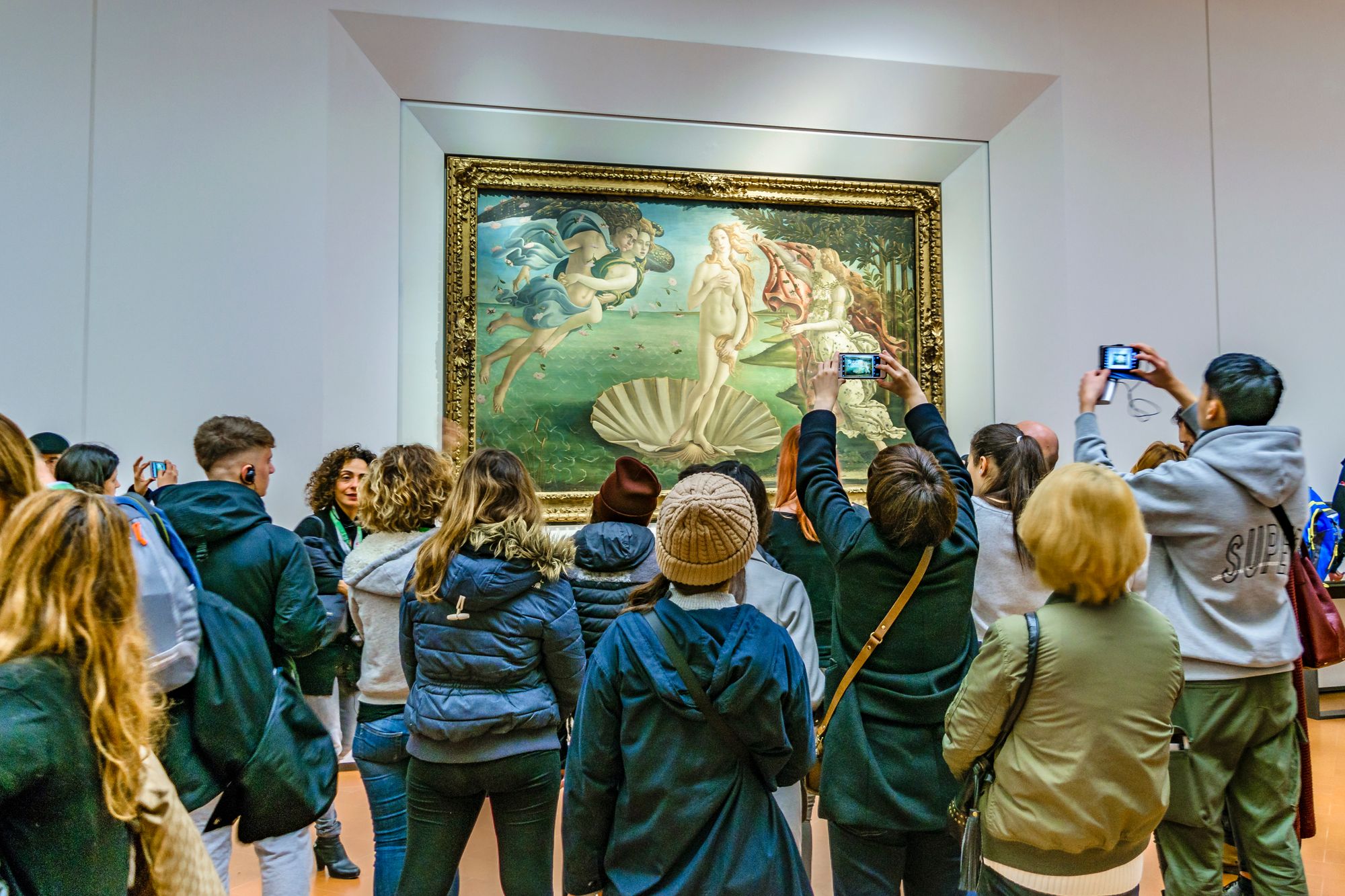
Masterworks’ Guide to The Uffizi Gallery
From it’s not so humble beginnings as the private gallery and headquarters of the Tuscan State for the illustrious Medici name, to one of the oldest Public museums in the world. Take a step into the Masterworks Museum Guide for the Uffizi, and explore the rich history of Florentine society and the Old Masters.
History of the Uffizi
Construction began by Giorgio Vasari in 1560 as a means of uniting the thirteen seats of the Tuscan government under one roof. The origins of the Uffizi were as an administrative office held at the capital in Florence. Uffizi actually translates to office in Italian. This building was also to represent the significance and celebrity of Cosimo di Giovanni de Medici, the head of the noble family that ruled over Florence. Although built in his honor, Cosimo could never see it for himself due to his passing in 1574.
Completed in 1581 by Alfonso Parigi and Bernardo Buotalenti, the building was then used for it’s fulfilled use with the top floor acting as a personal gallery space for the Medici family and their guests. In the years following more rooms were sectioned off or added to house the State Archive and collection of the Medici commissioned works, spanning from 13th to 18th century.
Signed off in a family pact on essentially her deathbed, Anna Maria Luisa de’ Medici, the last of the dying pedigree, bequeathed the collection to the Tuscan state to attract curiosity of visitors and to be used as decoration for the state and utility to the Public. The Uffizi Gallery opened to the public in 1769 by Grand Duchy Peter Leopold, making it one of the oldest public museums in the western world.
The Uffizi at a Glance
Operating hours for the Uffizi Gallery are: Tuesday to Sunday, 8:15 am to 6:30 pm
It is encouraged that due to an influx of visitors that for Saturdays and holidays reservations are made at least a day in advance. Not to worry, we are providing a direct link so you won’t have to spend any bit of your visit waiting in lines or deciphering Italian.
The Uffizi Gallery encompasses about 139,000 square feet and a total of two levels to peruse some of the most influential works of art from the Italian Renaissance.
Because of the size and pertinence of the collection of the Uffizi we recommend your visit would encompass 2+ hours. That will vary on which masterpieces you want to spend your afternoon gawking at.
We have a few recommendations of the must see in the museum’s collection below. Feel free to browse through and then become your friend’s and family’s tour guide on your next visit!
Masterworks’ Must See at The Uffizi
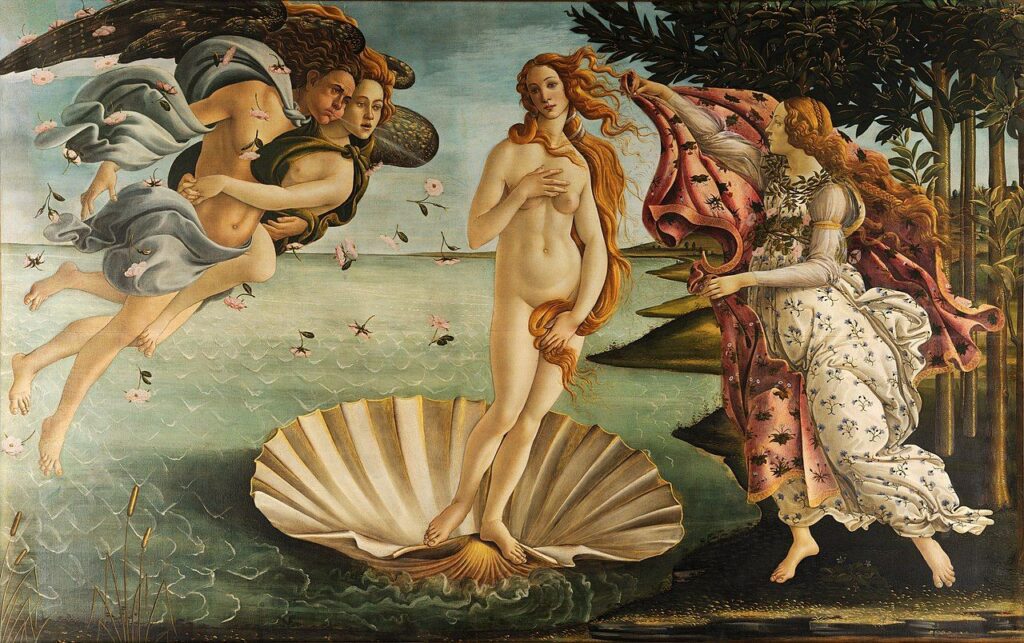
- Birth of Venus by Sandro Botticelli
Born Alessandro di Mariano di Vanni Filipepi, better known as Sandro Botticelli, was a Florentine born Renaissance artist. He had seemingly apprenticed under another Medici favorite, Francesco Lippi, this is where Botticelli was able to hone in on his craft and reputation as a reputable artist in the burgeoning early renaissance.
Probably one of the most notable of his paintings, The Birth of Venus, stands (on a half shell) as a masterpiece of the Florentine obsession for mythological subject matter. Botticelli was best known for and commissioned for these very projects. Botticelli was considered a favorite of the Medici family -and us. Most recently, a Botticelli had a successful stint at auction last year, fetching $92 million, making it the most expensive work to appear at auction by a Renaissance artist.
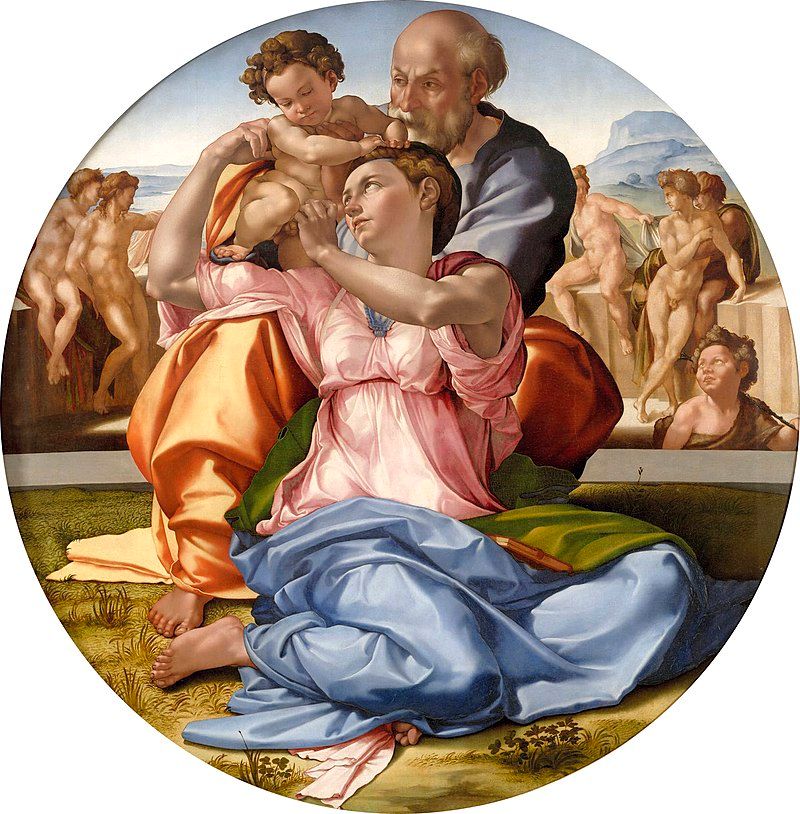
2. Doni Tondo by Michelangelo
Michelangelo needs no introduction, but this piece does. The Doni Tondo is one of Michelangelo’s most unique works given that it’s not a sculpture and not the typical kind of painting. A Tondo – or circular painting was something not uncommon in the renaissance era, but this one holds an even more significant value.
Believed to have been commissioned to commemorate the marriage and first born between Angolo Doni (hence the name), a proficient Florentien banker, and Madalena Strozzi. The subject matter of the Holy Family – Joseph, Mary, and baby Jesus was chosen to reflect the newly weds and parents of the Doni family. Something to consider for your next baby shower gift.
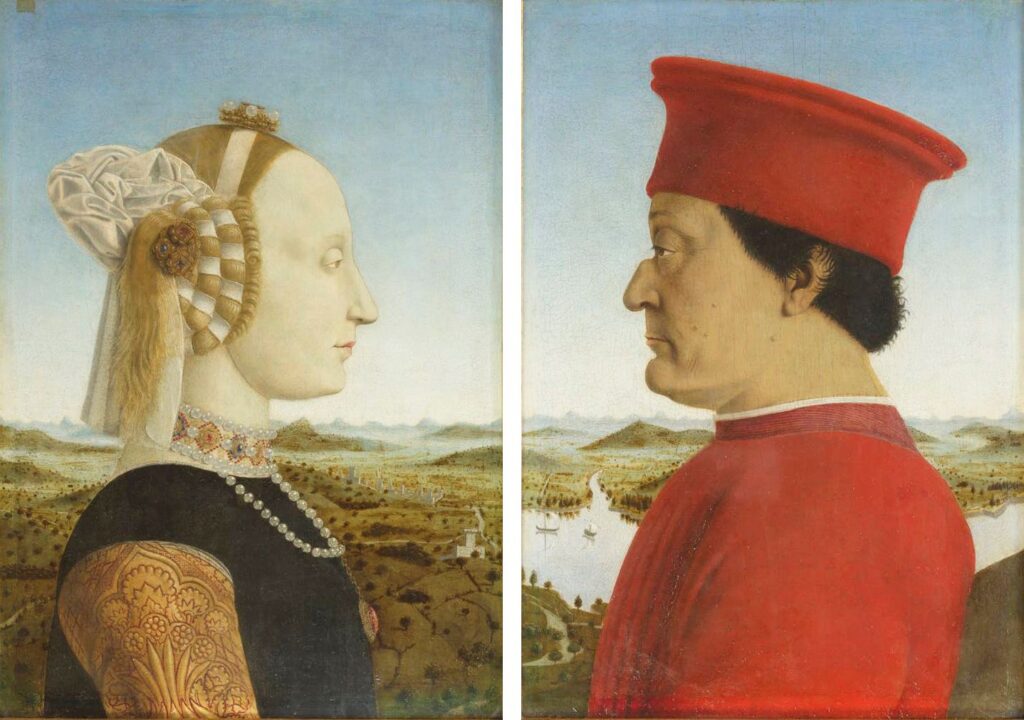
3. Duke and Duchess of Urbino by Piero Della Francesca
This piece makes our list for its historical significance in Early Renaissance portraiture. The portraits of the Duke and Duchess of Urbino are one of the most celebrated and studied in academia. This portrait is considered a diptych. A diptych is a painting or relief sculpture made of two parts that are usually joined together by hinges. This is to signify that these two portraits are intended to be read and viewed together as a pair.
The Florentine taught artist had a very close and personal relationship to the rulers of Montefeltro (Now modern day Marche) offering him this personal commission. Piero had a unique ability of bridging his interest in geometry and art, allocating him the technical skills like point perspective that was far beyond the standard in painting of the 15th century.
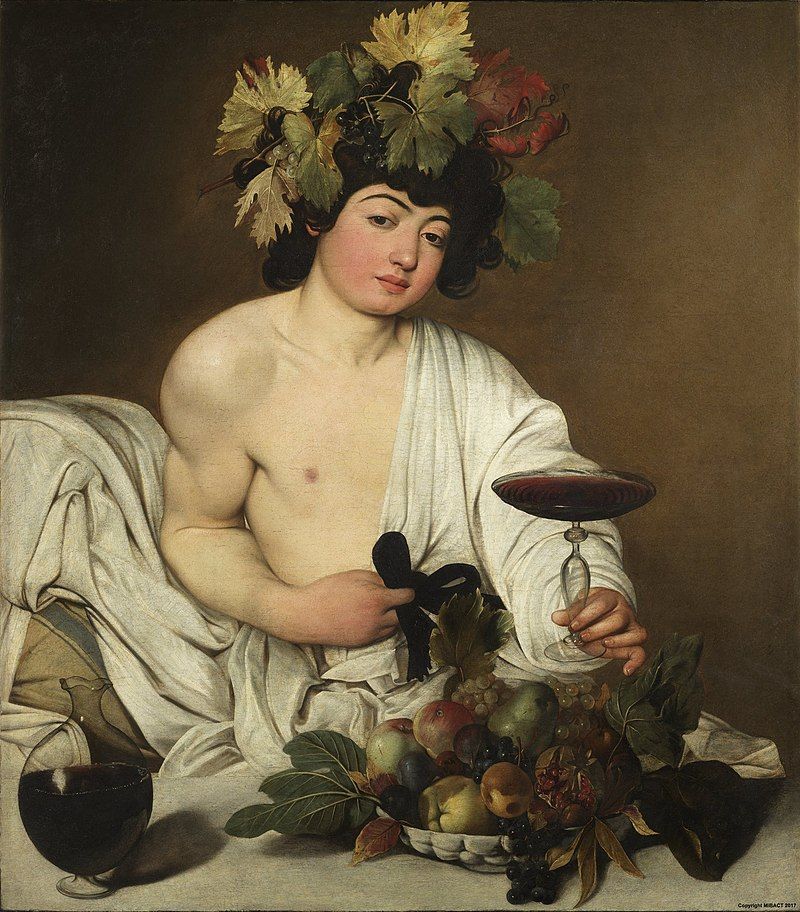
4. Bacchus by Caravaggio
Michelangelo Merisi da Caravaggio, known commonly as Caravaggio (the city he spent most of his childhood in), is another one of those aptly single named Renaissance artists. originally born in Milan, he and his family fled to Cravaggio to escapse a plague. Around then he began to apprentice another famous Lombard Painter, Simone Peterzano. This was the foundation for the expert skill of realism that Caravaggio is best known for in his later works.
Bacchus, a popular theme in his works, is a representation of a young boy dressed as the Greek god of wine. He sits poised in a casual fashion handing you a glass- but also holds a deeper meaning when you notice the almost realistic rotting fruit basket. Caravaggio was fond of his paintings representing vanitas, meaning life and beauty is fleeting. Would you accept the glass?
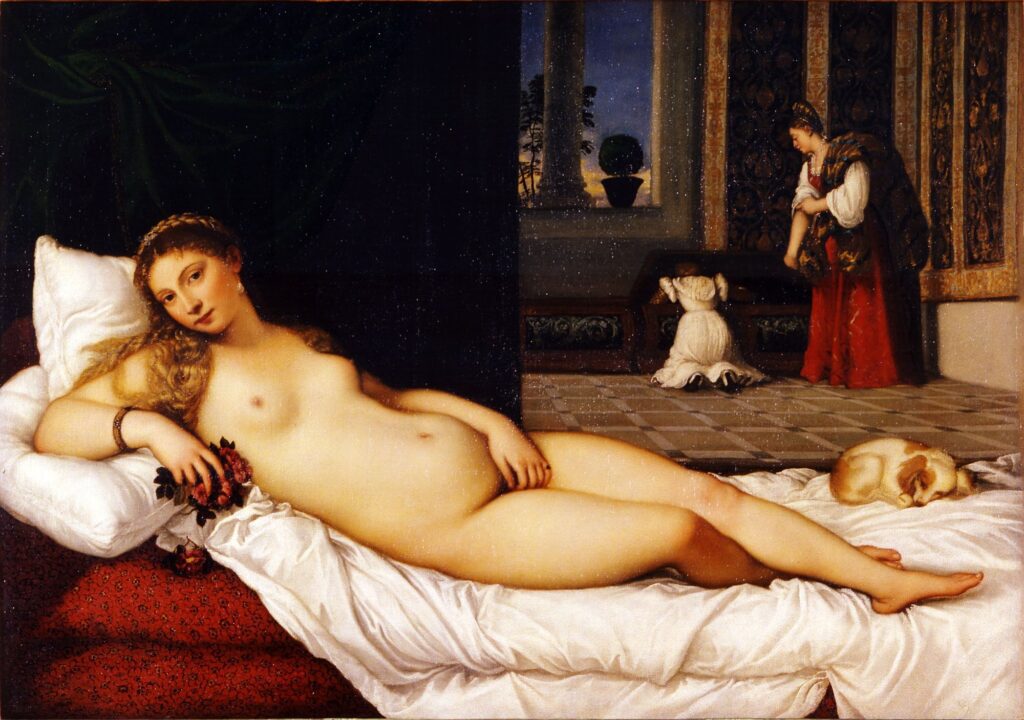
5. Venus of Urbino by Titian
Titian cited as one of the most versatile of the Italian painters because of his vast array of subjects and styles included in his portfolio. However, his most well known were those that focused on the mythology and vast arrays of color. This work in particular exemplifies the nature of Venus, the Roman goddess of love and desire. Her eyes are open and direct almost inviting the viewer into her space. Titian was not afraid of inviting this kind of controversy, but still granted him the praise of one of the greatest painters to embark from the Venetian school.
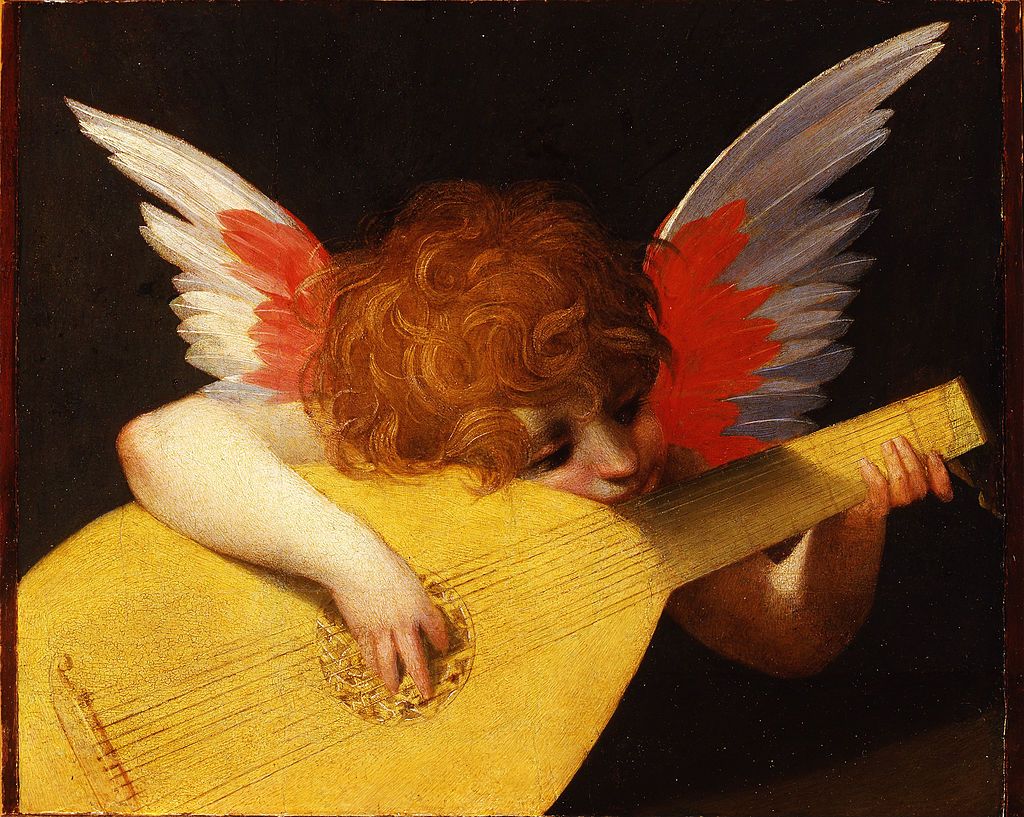
6. Angel Playing the Lute by Rosso Fiorentino
Born Giovanni Battista di Jacopo, Rosso was donned his name from his red hair and being a Florentine. Rosso was best renowned for his paintings in the mannerist style. Mannerism is best described as a style of art that featured unusual effects on scale, color and perspective.
This work in particular is interesting as it is a fragment of a lost alter piece. The traditional subject matter of an adorable cherub with his lute is distorted slightly with more abstracted brush strokes and color giving it more real life and effect.
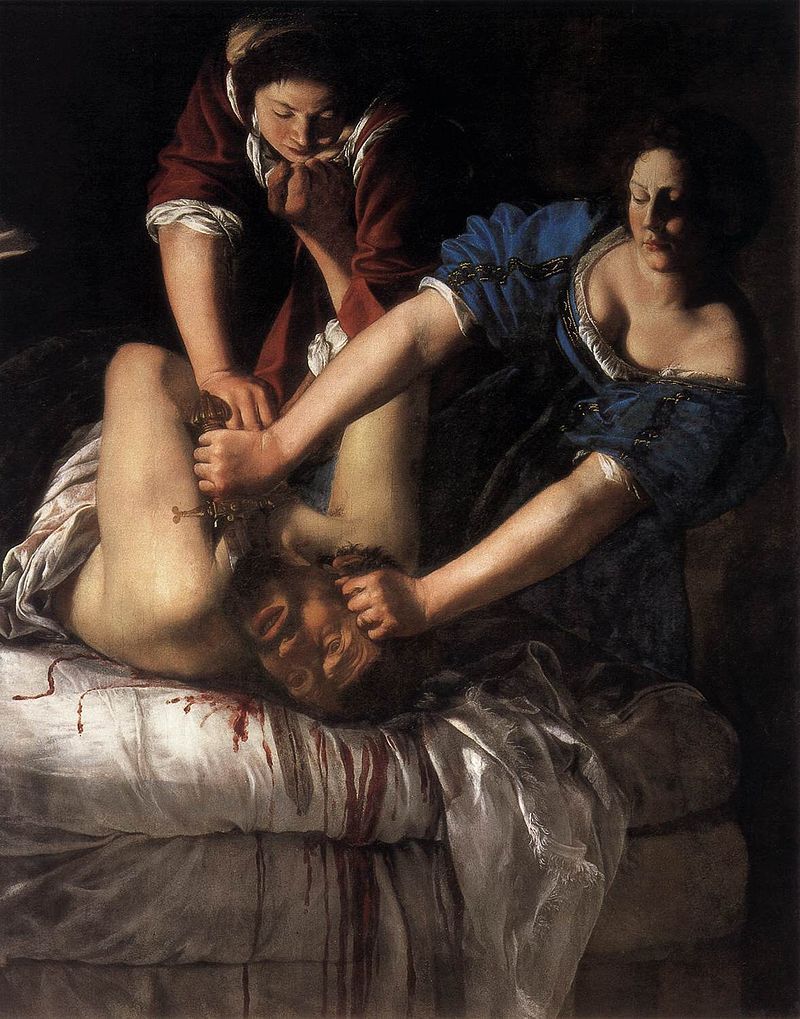
7. Judith Beheading Holofernes by Artemisia Gentileschi
This masterpiece hits our list of must see’s since it was painted by one of the few female great masters. Gentileschi was one of the fortunate females of the Renaissance to be granted an education in the arts in Florence. This work was later completed in Rome where she sought Caravaggio as a major influence in her own style of historical painting.
The painting depicts the end of the story of Judith from the Bible when she murders Holofernes. A graphic image to come from a woman in an era where her sex was treated more like property than people. We love Artemisia, and how she chose to be an artist in a time when the field was dominated by men. #GirlBoss
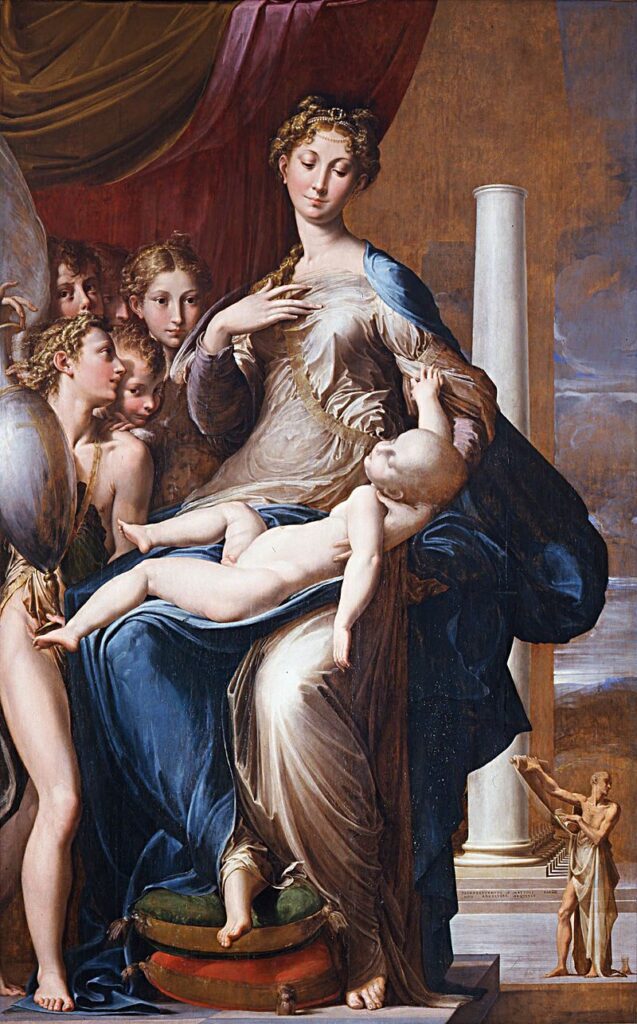
8. Madonna with the Long Neck by Parmigianino
This work of Parmigianino is possibly one of the best examples of the Mannerist movement, discussed earlier. Parmigianino was able to create a beautifully uncanny rendition of one of the most repetitive subjects chosen in his period, and make it interesting. Some of the keen mannerist qualities of this painting are the elongated neck of the Madonna, the larger than ever baby Christ, the strange choice in architectural background.
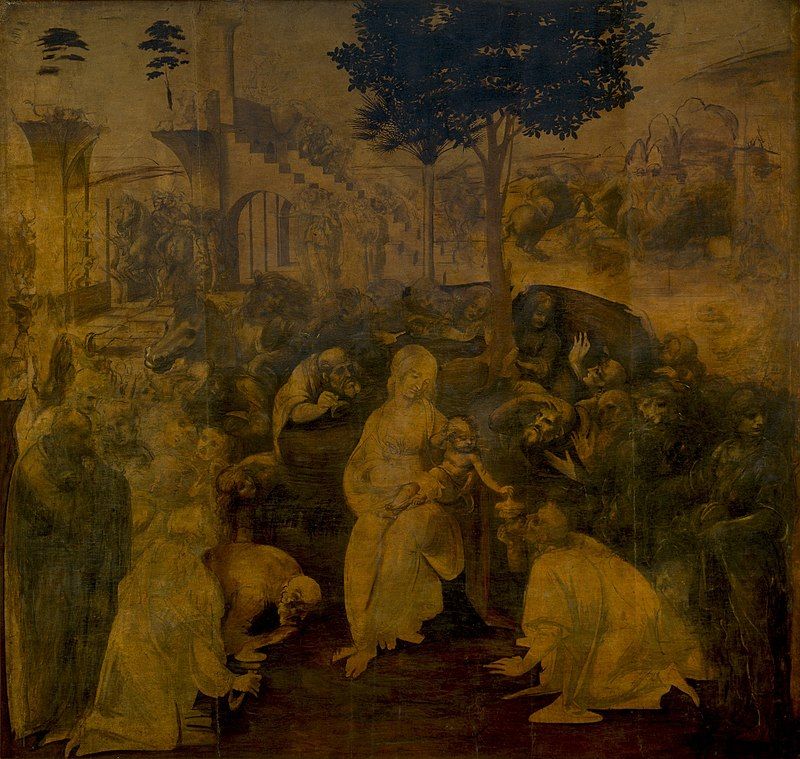
9. Adoration of the Magi by Leonardo Da Vinci
This is no Salvator Mundi, but it is a Da Vinci. Leonardo da Vinci is the poster child of the Renaissance with having some of the most recognizable paintings and arguably influential designs of the western world. But bet you didn’t know about this secret painting.
Its actually an incomplete painting. The work was commissioned by a group of Augustine monks for a church outside of Florence’s walls. The subject depicts a celebration and fest amongst the Magi in response to Christ’s birth. Leonardo disrupted the process of the painting and the monks were growing impatient – so another artist completed their own rendition. Da Vinci’s now plays the crossing lines of a painting or rough sketch – showing us the early stages of his process to the finished masterpieces we see in museums across the world.
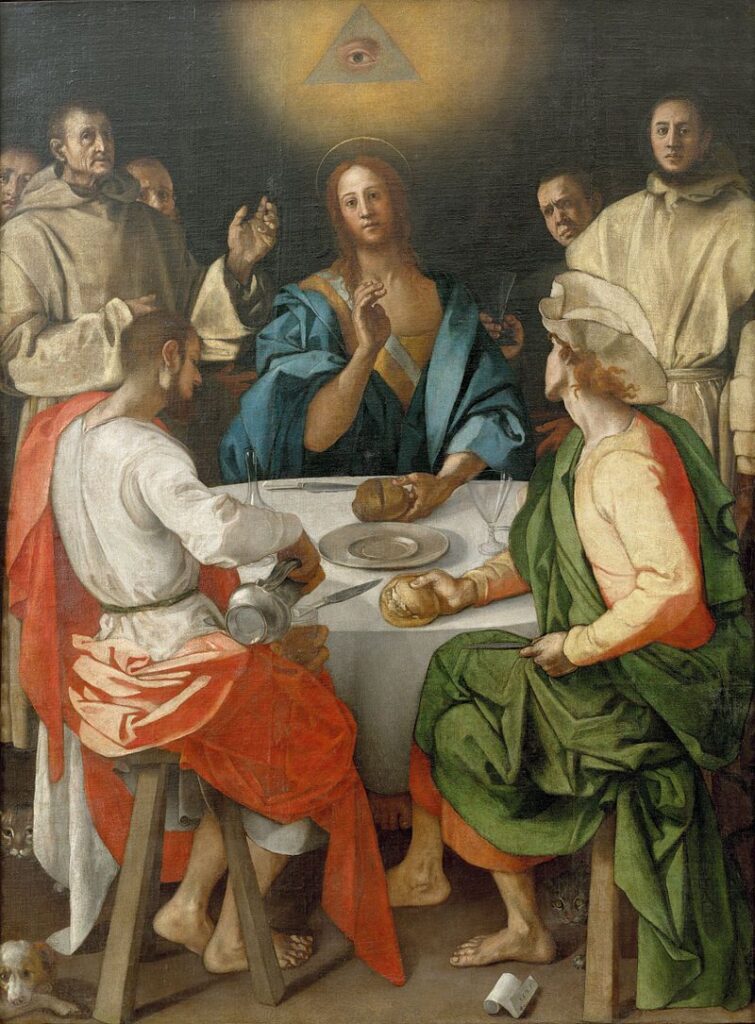
10. Supper at Emmaus by Pontormo
Coming in to close our list of must-see at the Uffizi is this masterpiece of Jacopo Carucci, better known as Pontormo. Both he and Rosso were trained in the Florentine school and often worked alongside each other. He was known to be heavily influenced by the vibrant and restless style of Durer prints. This translated to his work having a more psychological and darker look, we can call it tormented mannerism.
Skip The Museum Lines with Your Own Art Portfolio.
Many have a passion and love for fine art but not the bank account to support their own collection. That’s why we’re on a mission to democratize the world of blue-chip art investing and provide access to an asset class that was once only accessible to the ultra-wealthy.
Masterworks is the first platform that allows investors to purchase shares representing an investment in authenticated, multi-million-dollar artworks.
We handle the valuation, authentication, and purchasing for you (with help from our expert research team, our partners at Citi Bank and Bank of America, and our team of art world experts).
It’s now possible for regular investors like you to invest in multi-million-dollar artwork and share in the proceeds from the sale of valuable art without the need for Bezos-sized net worth. Become an investor in masterpieces from artists like Banksy, KAWS, Basquiat, and more. Let’s bring together your love of art and your passion for investing.